Design Experiment: A primer with emphasis on AB Testing
Gem City Tech ML/AI Meetup
Presented by Evelyn J. Boettcher, DiDacTex, LLC
Dec. 15 2022
Welcome to Gem City Tech ML/AI
We meet every third Thursday and are part of Gem City Tech meetup group
GemCity TECH’s mission is to grow the local industry and the community by providing a centralized destination for technical training, workshops and providing a forum for collaborating.
Currently, support several special interest groups from a variety of technical disciplines.

- Dayton Web Developers
- Dayton Dynamic Languages
- Dayton .net Developers
- Gem City Games Developments
- New to Tech
- Frameworks
- Machine Learning / Artificial Intelligence (ML/AI)
- Code for Dayton
Big Thanks to our Sponsors
Gem City Tech
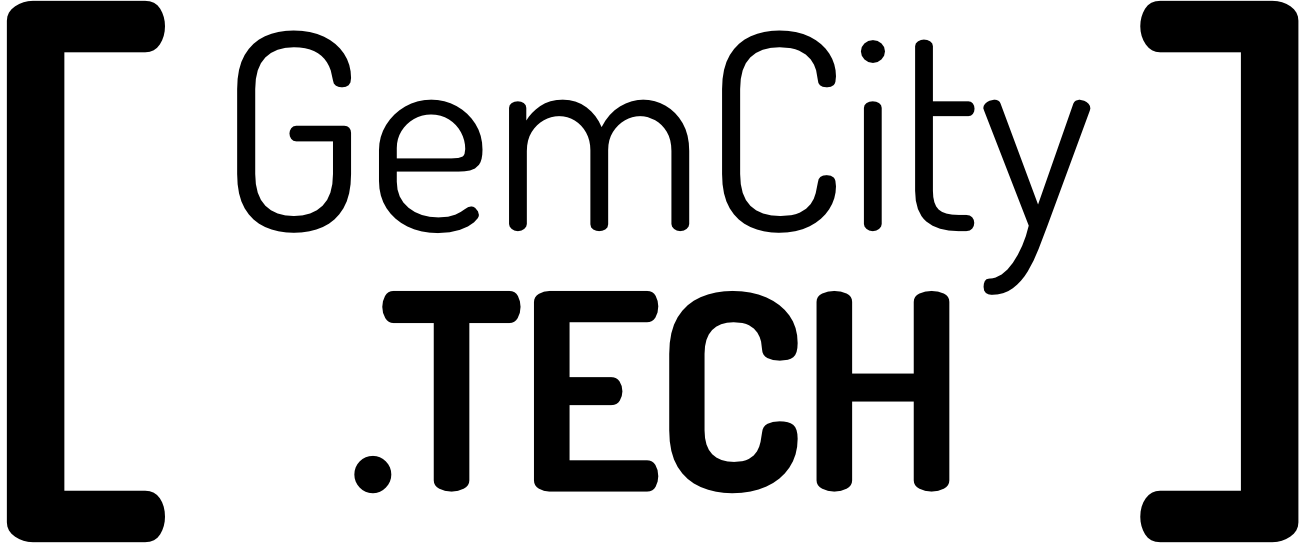
The Hub

Technology First

Human IT

Pizza Factory

- GemCity TECH: GemCity.Tech
- The Innovation Hub: thehubdayton.com
- Technology First: www.technologyfirst.org
- Human IT: https://humanit.us/
- Pizza Factory: https://pizzafactory.biz/
Calendar Events
Gem City Tech ML/AI: Third Thursday at 6.
The GemCity TECH Meetup calendar of upcoming events: www.meetup.com/gem-city-tech
May 18th will be at 1pm at WBI.
Why Design an Experiment
It cost money to run experiment, train algorithms and implement algorithms.
We saw this in March’s meetup where initially one needed to upgrade to Pro Colab. But then we saw that we could reduce sample size and runtime. Which might have allowed us to scrapped by with the free version of Colab.
There are mathematical models you can use to identify what is the number of sample you need to get good results.
In addition, not knowing how to adjust your experiment to meet the risk, can cost you your job and or the company a lot of money.
Recently, Google debuted their version of ChatGPT. This was a high risk demo. It also failed and cost the company $100B in valuation.
You need to know how to adjust your experiments for the risk.
This is where design experimentation comes in. How does one adjust for risk while reducing the cost of running the experiment.
One way to reduce cost and risk is to set-up an A/B Test.
What is A/B Testing
A/B testing is a randomized controlled experiment done in production.
There are two tests: A and B, in which a single variable adjusted (B Test).
This variation, might affect a user’s behavior.

Goal: Increase End User’s Objective
- Business: Income increases >> Costs of change
- Health Care: Health increases >> Side effect
So why do A/B Testing
- Why spend the resources to do tests
- Why risk angering your customers with changes?
- I got data miners, I do not need tests!
- I am a ML Scientist, I don’t need to know the business side
Life is complicated.
Domain knowledge only gets you so far!
Subject-matter experts (SME) from Microsoft, Netflixs etc, find when they implement changes that only a small fraction of their ideas have the planned outcome (Sweet 2022).
Even though we are isolating a single variable, that variable interacts with a million other variables.
You simply can not model everything or know everything.
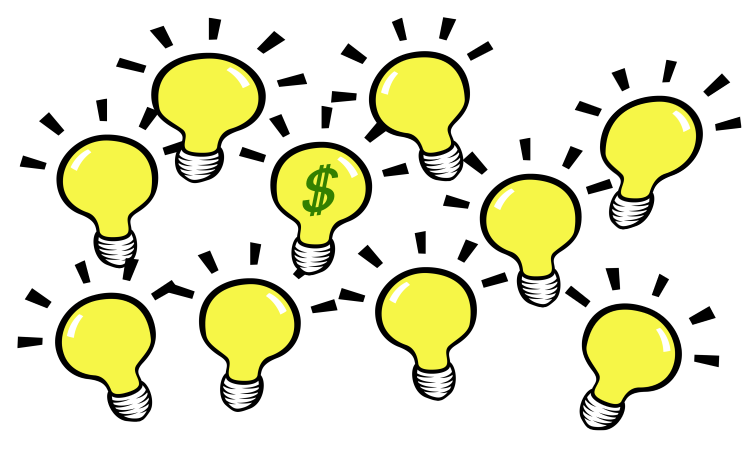
Any change can hurt.
- Even tested changes
- Though less likely!
- Even tested changes
Change can help
- “If you’re not growing,
you’re die-ing”
- “If you’re not growing,
Gedanken:
Trader Janes has a New Pizza
Say there is a grocer called Trader Janes and it wants to add a new pizza to its line up.
However, they need to keep the same number of types it sells a constant. Freezer only holds N pizzas.
They will have to remove one pizza from their lineup to add the new item.
Typical Work flow
- Marketing asks a Data Miner to rank popularity of pizza.
- The Data Miner finds the pizza that sells the least.
- Stores remove that pizza.
- Stores add new pizza.

New Pizza added!!!
Unfortunately:
A week later sales go down.

What happened?
- Don’t know, because the store implemented many changes that week!
- It’s the week after Thanksgiving and sales always go down that week.
- Turns out there was a small group of heavy spenders that love this pizza.
A / B Testing help predict what changes will increase the bottom line.
A / B Testing Limitations
A/B Testing is used to clarify a vision, but does not create vision.
For example, an ophthalmologist quickly gives you a set of two choices; 1 or 2 (2 or 3) that lead to sharpen vision. Their test, like A/B, can not give you vision.
Though without a clarity, a vision has serious limitation.

A/B Testing and the Three ways
A/B Testing is an extension of DevOps.
Feedback will be the results of the A/B Testing.
However
Experimentation happens in production!
A/B Tests
The good, the bad and the ugly
Rewards
- Increase companies goals: (make more successful):
- Business: Profits
- Healthcare: Health
- Defence: Situational Awareness
Risks
- Test cost time and money
- Don’t know what percent of risk is acceptable
- Medical and Defence will have higher threshold of risk
- Upset customers
- Change can make things worse
Mitigation
- Have the smallest test possible
- 5% False Positive
- 20% False Negative
- Typical of non life critical changes
- Minimize number of samples
Reducing Costs
Minimal Viable Product
Need to create the smallest, fastest A/B Test that is statistically meaningful.
How do you minimize the number of samples (N)?
Want an N samples that show a 5% false positive and 20% false negative.
\[ N = ? \]
Use Statistics
Defines minimum number of samples (N) as:
\[ N > 2.48 \left( \frac{\sigma_\Delta}{\Delta} \right)^2 \]
- \(\Delta\): How much of a difference is needed to make the change
- It cost money to make a change
- Increase to bottom line needs to be significant, to accept risk
- Example: Trader Jane’s Pizza needs sales to increase by 3%
- \(\sigma_\Delta\): estimated by business historical data
- \(\sigma_\Delta\) = \(~\sqrt{2 \sigma_{log}^2}\)
- \(\sigma_{log}\): How much does sales fluctuate over a given time period.
- \(\sigma_\Delta\) = \(~\sqrt{2 \sigma_{log}^2}\)
Important
Unless there is a clear, measurable advantage, no change should occur.
There is no guarantee that change will be effective.
Bias and Harm
In addition, our testing and product should do no harm.
Where does 2.48 comes from?
\[ N > 2.48 \left( \frac{\sigma_\Delta}{\Delta} \right)^2 \]
Rules of Thumb: 20 / 5 Rule
Assume there is no difference between A and B
\[ \Delta = 0 \\ \Delta = B - A \]
False positive
- A is better but, you implemented B
- incurs an explicit cost
False negative
- B is better but, you stuck with A
- incurs an implicit cost
\(\alpha\) == False Positive rate
- 5% => \(z_{score}\) = -1.64
You can assume B is better than A
\(\beta\)== False Negative rate
- 20% => \(z_{score}\) = 0.84
You can assume A is better than B
From Standard Normal Distribution
Mean is 0
Standard deviation: \(\sigma\)
\(z_{score}\) measures the distance between a point and the mean in units of \(\sigma\)
\(Z_{score}\) = -1.64 (5%)
\(Z_{score}\) = 0.84 (20%)
\[ 1.64 + 0.84 = 2.48 \]
- *Graph (Pierce, n.d.)
False Positive
\(\alpha\) == False Positive rate
- 5% => \(z_{score}\) = -1.64
Assume: B is better than A
False Negative
\(\beta\)== False Negative rate
- 20% => \(z_{score}\) = 0.84
Assume: A is better than B
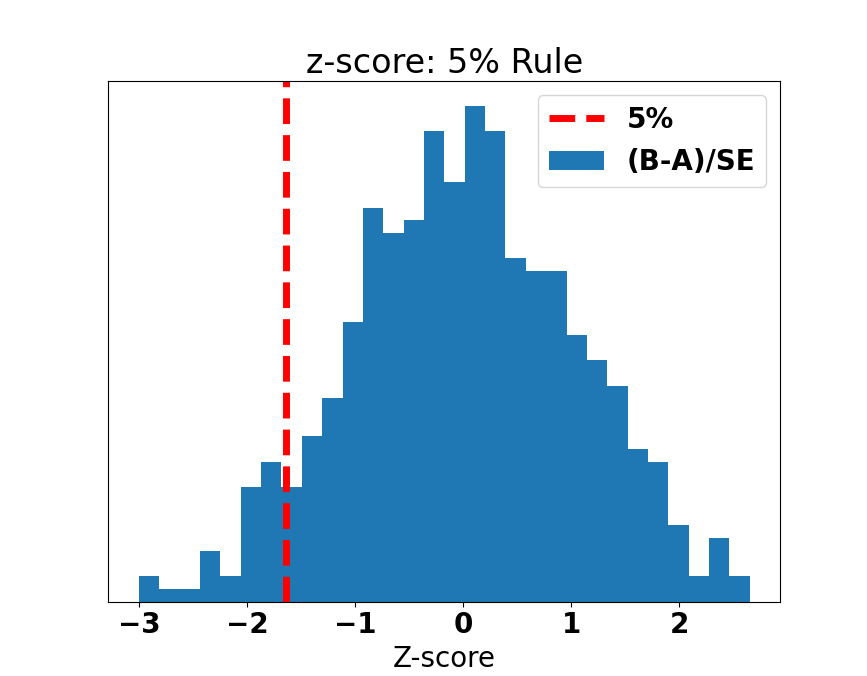
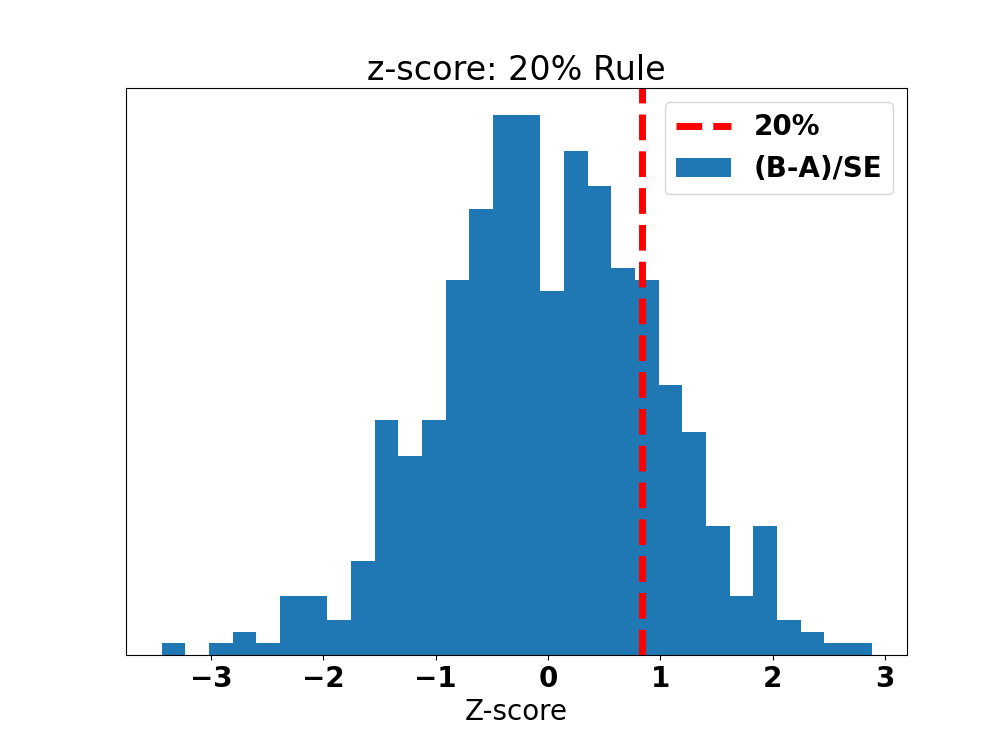
Yeah,
we have our minimal viable test.
But we are not done yet.
One more thing to worry about
Can this (change/test) harm our customers?
Do no Harm: F potential
If we implement B, how F–ed up will that make the users?
If we tested B, how F–ed up will that make the users?
Social Sites
A/B Testing is being done on users without consent, knowledge and at scale (100K of users).
Group mindset has been around since the 1950’s. Current research shows that our minds physically change when we work together (Hughes, n.d.) socially.
So it is scary to read
- Facebook: Tested their algorithm to see if it really does radicalize people (Zadrozny, n.d.)
- LinkedIn: Tested on 20 million users to find out how links affect people’s career/jobs (Singer, n.d.)
- Facebook: Tested on 700,000 users to see if they can make them sad (Hern, n.d.)
Health Care
- Drug Companies: OxyContin (Detrano 2022)
- 1% addiction rate advertised (From non real world users)
- 10-30% addiction rate in real life
Remedy
Good news
There are already strong standard for testing on human subjects.
There is the IRB (Internal review board) preprocess.
It has required and continuous training and certification: CiTI training.
Bad news
Only required for companies receiving federal government funding: Universities, Air Force, Army etc.
Not required for companies that work with schools (state and local funding) and social media companies.
F potential
In light of this, I propose researchers use the F potential.
(Currently, not a real thing. Just something to think about.)
\(F_{upped}\) Potential
\[ F_{upped} = \begin{cases} \text{1,} &\quad\text{if seriously harmed}\\ \text{0.5,} &\quad\text{if slightly harmed} \\ \text{0,} &\quad\text{if not measurable}\\ \text{-0.5,} &\quad\text{becomes better} \\ \text{-1,} &\quad\text{becomes a lot better} \\ \end{cases} \]
If \(F_{upped}\) > 0, test should be a no-go.
If \(F_{upped}\) < 0, \(\Delta\) should be halved.
- e.g. \(\Delta\) is the amount of gain the company needs to make the change.
Example: Trader Jane’s Pizza needs sales to increase by 3% (\(\Delta\)).
If pizza made people better, then \(\Delta=1.5\%\).
One more thing to worry about
Seen and Unseen Bias
Biases can increase the F-potential.
Luckily, A/B Testing can help with both unseen and seen bias.
Example: Unseen Bias
I know of three small business that where started by young women in the Dayton area.
Their original logo design used beautifully detailed font.
Unfortunately, this detailed font would make it difficult for people like me (over 40) to read it.
They literally could see their logo.
However
Their logo was not readable to me when I drove by!
This is an unseen bias.
These women (All of whom where lovely and kind) did not know that they made a logo could not be read by me.
Contrast threshold function (CTF) of the Eye
The human eye’s ability to resolve a spatial frequency is dependent on contrast. This contrast threshold function will change with age.
- At ~40 your eye will need more contrast to see.
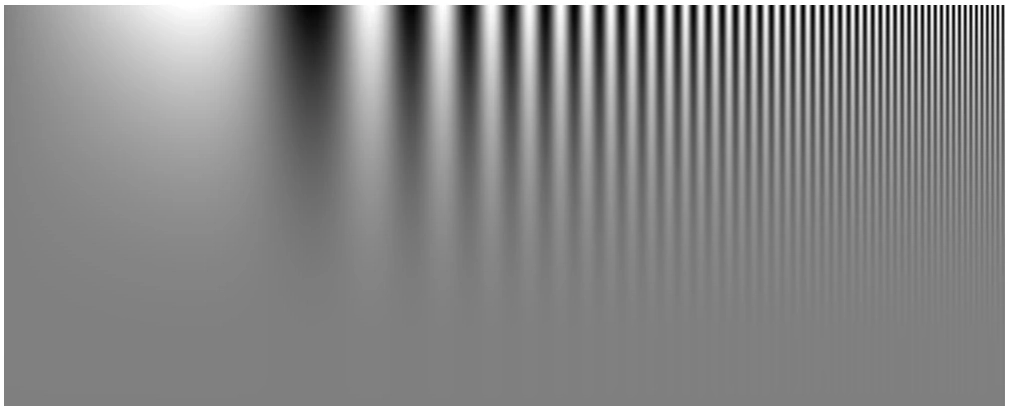
Logos evolve with Testing
Starbucks Logo Evolution
Starbucks Logo has evolved to reduce high spatial information.
- Old Logo: High frequency information
- thin lines
- New Logo: Medium frequency:
- medium width lines
(2022)

Change Risks
- Attract more old people, alienate young
- Loyal customers might not like change
Voice Bias in 21st century?
With more diverse workforce, a research(er) bias will go down.
- True
But, there is still unseen bias in voice in the 21st century!
Google and Apple had a hard time getting voice recognition to work for kids (Scanlon, n.d.)
Not only do kids speak at higher frequencies than women, they have different speaking patterns.
One can not simply take an adult’s voice and shift the frequency. So ML/AI have a hard time figuring what kids are saying.
Why kids are important
The market for voice recognition for kids looks to have a strong market growth.
Conclusion
A/B testing is a randomized controlled experiment done in production.
There are two tests: A and B, in which a single variable adjusted (B Test).
This variation, might affect a user’s behavior.
Your A/B Testing should:
- Make the company more successful.
- Follow some ethical guidelines, like the \(F_{upped}\) potential
- If \(F_{upped}\) > 0, test should be a no-go.
- If \(F_{upped}\) < 0, \(\Delta\) should be halved.
A/B Testing has Risk
No free lunch.
Even after testing, test results might not make the company more successful.
Thank you
Next month Ideas
- MLFlow
- Multi-Arm Bandit
- Bayesian Optimization
- Classroom method for training ML models
- Data control: Git for Data?
References
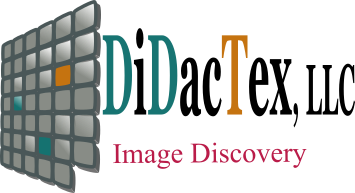
Gem City Tech ML/AI


